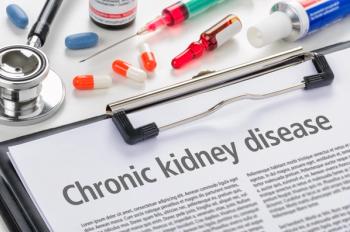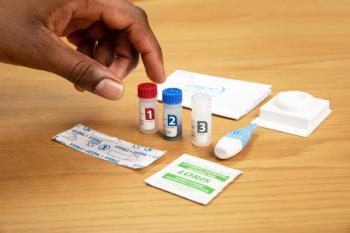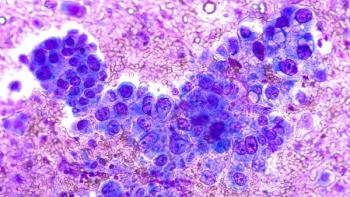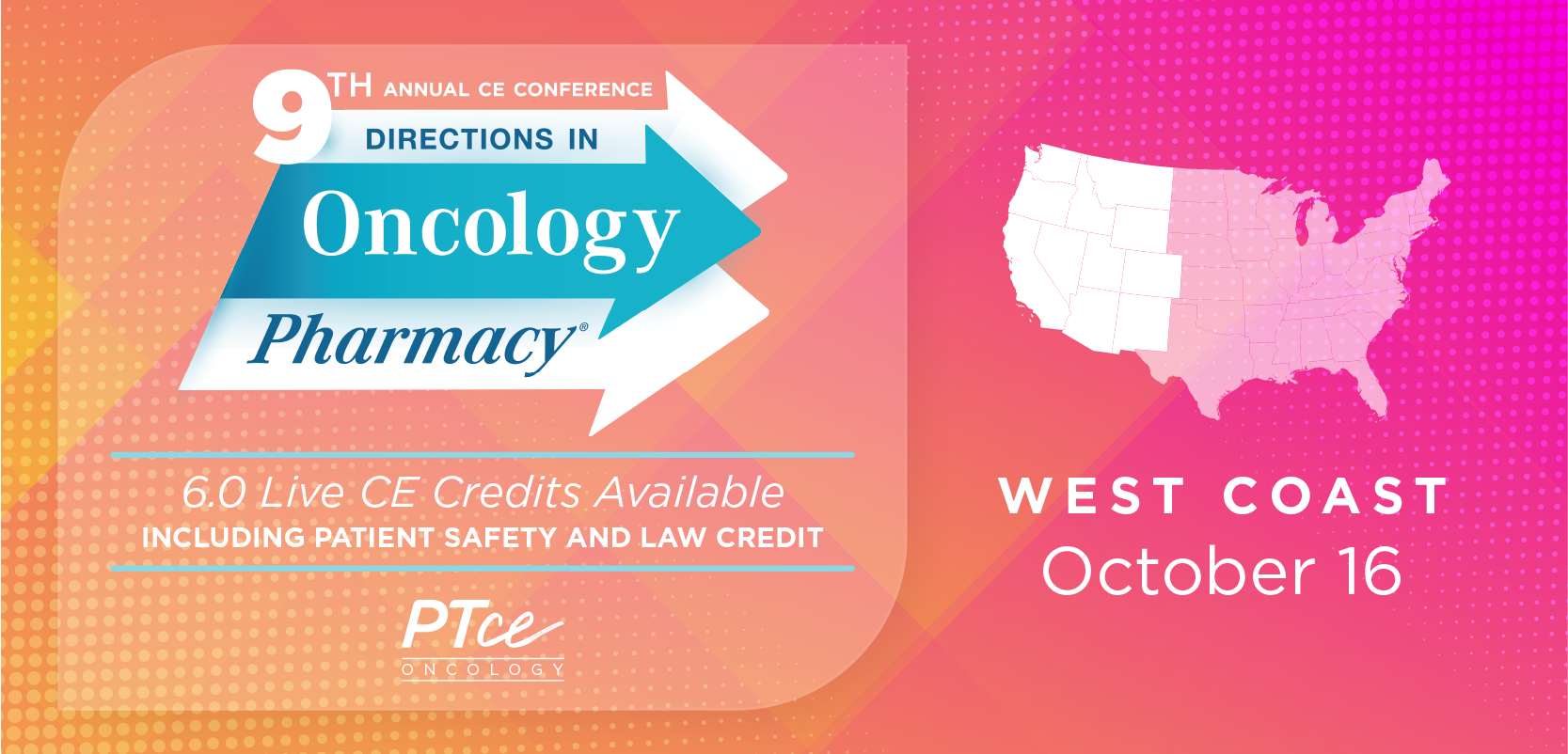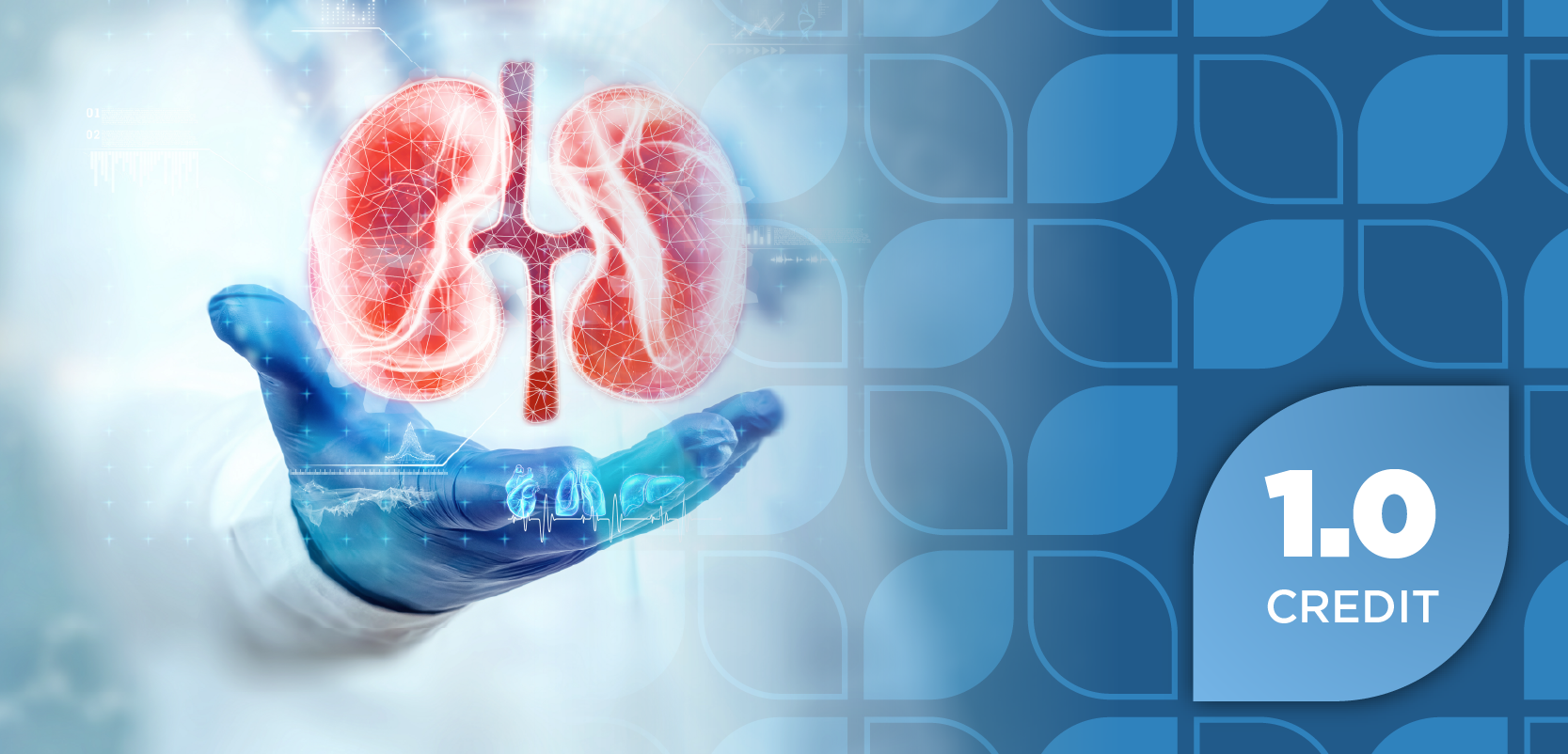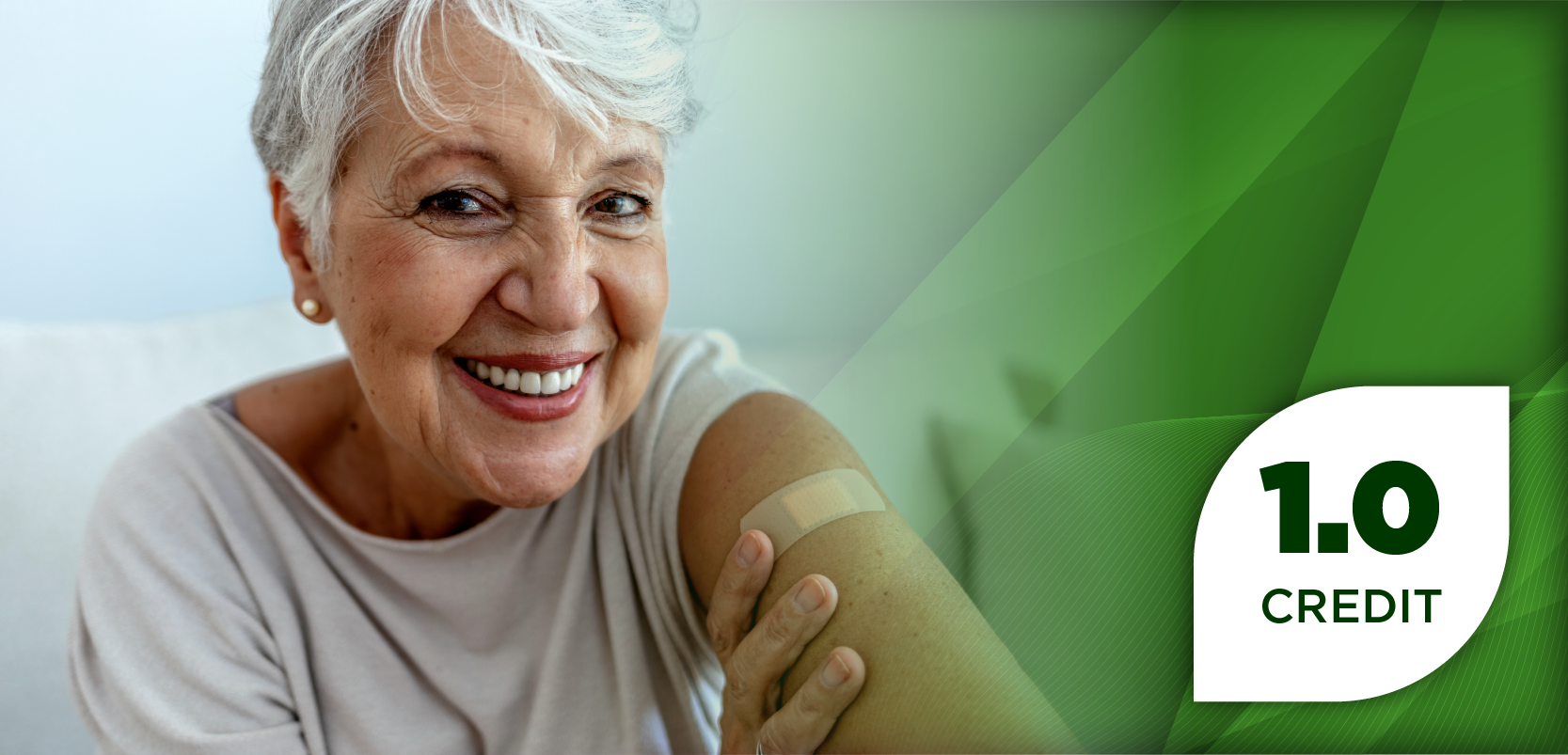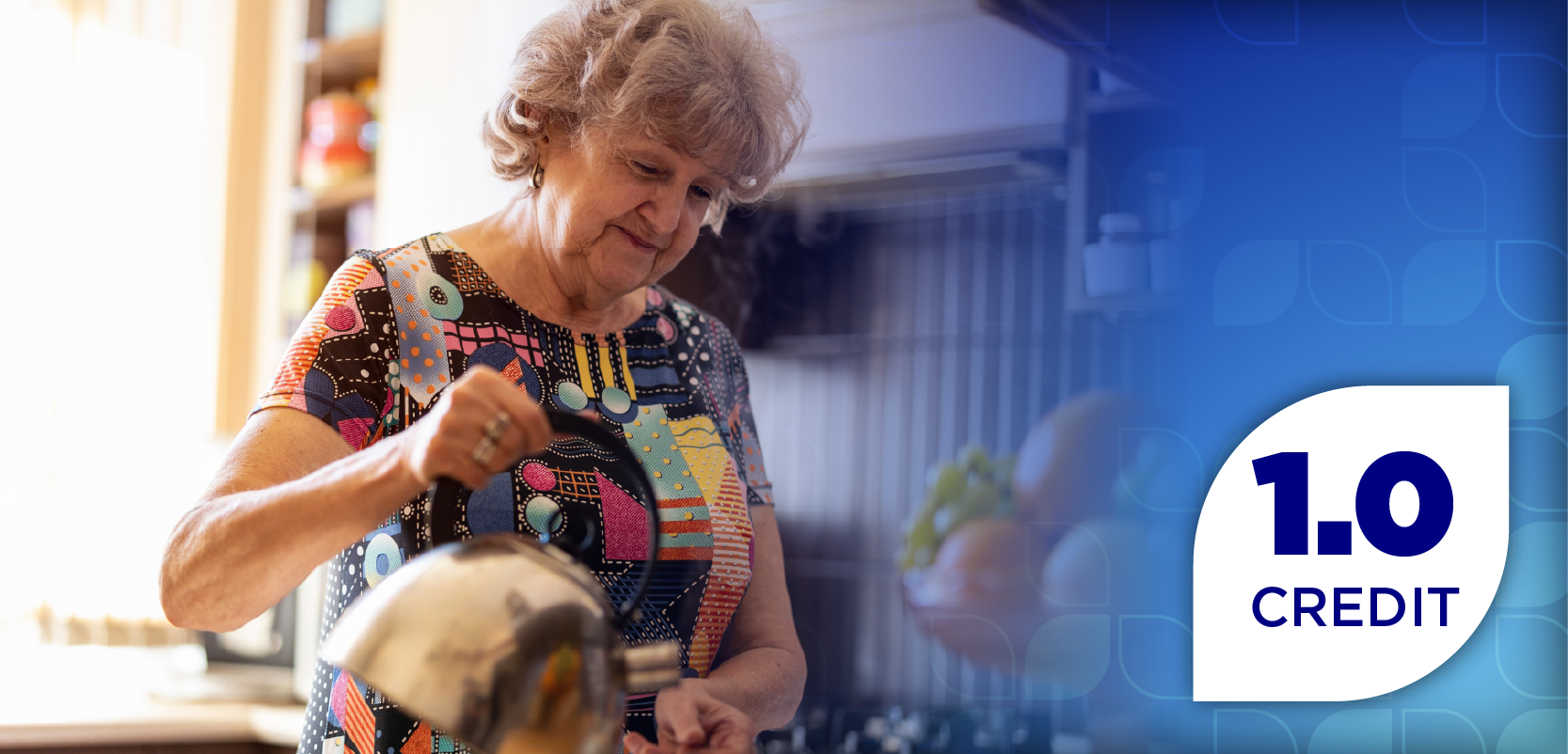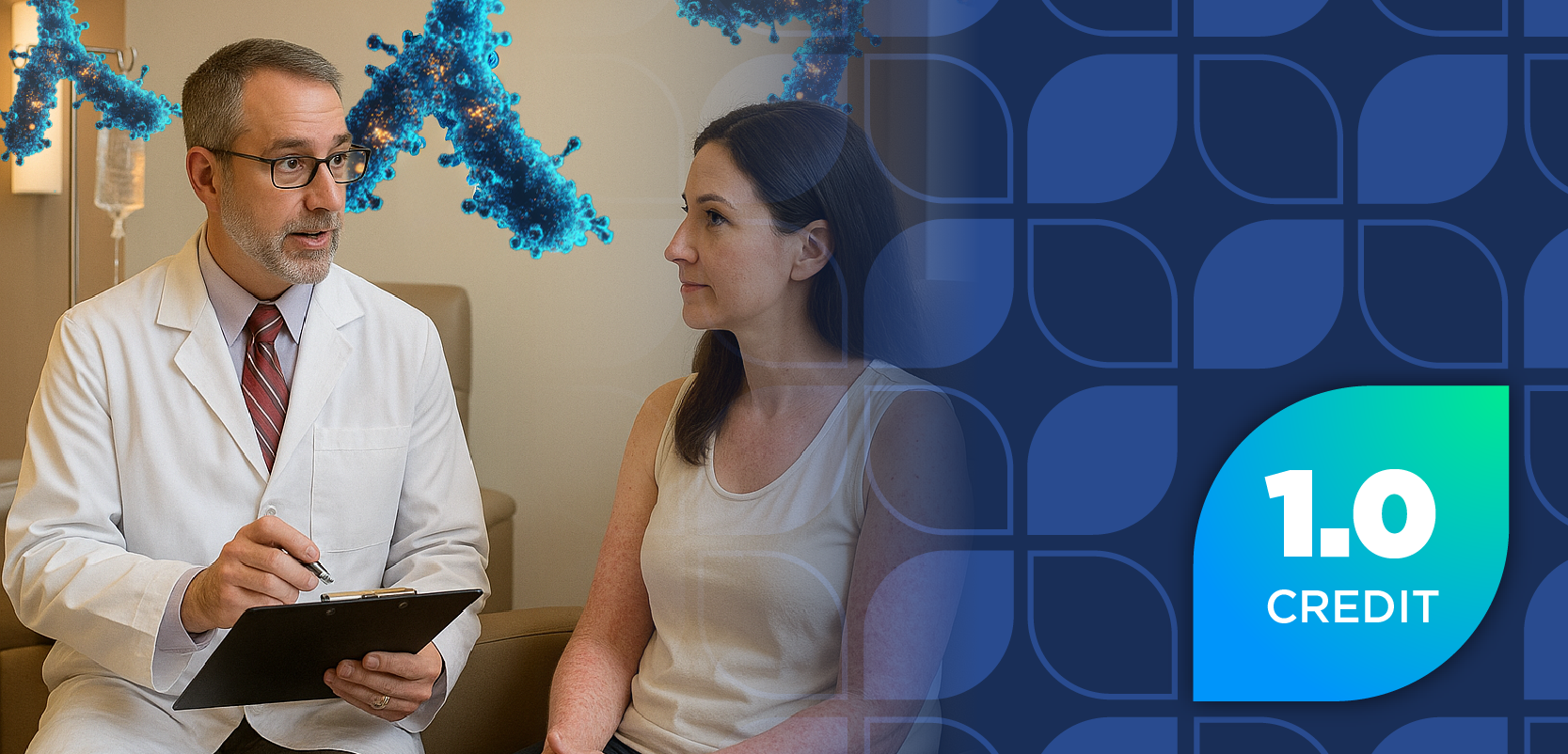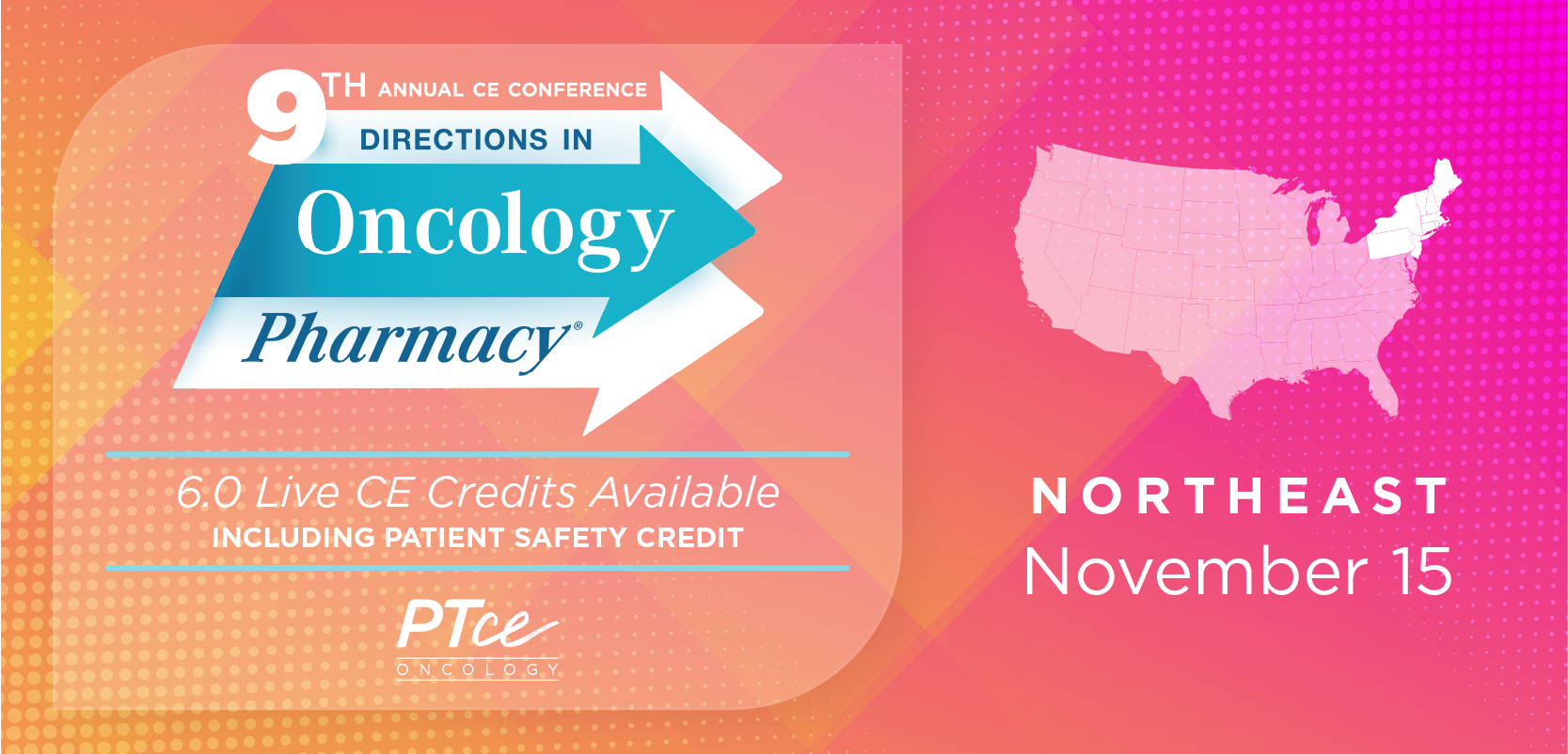
- Influenza Guide for Pharmacists July 2021
Leveling Up for Flu Season in the COVID-19 Era: How One Pharmacy Is Rising to the Challenge
Kevin Day, PharmD, president of Day’s Miami Heights Pharmacy in Cincinnati, Ohio, discusses how his independent pharmacy is gearing up for influenza season while continuing to deliver COVID-19 vaccines safely.
Recently, an editor from Pharmacy Timessat down with Kevin Day, PharmD, president of Day’s Miami Heights Pharmacy in Cincinnati, Ohio, to discuss how his independent pharmacy is gearing up for influenza season while continuing to deliver COVID-19 vaccines safely.
Pharmacy Times: How have pharmacy staff helped to streamline the immunization programs at your pharmacy?
Day: In our pharmacy we have a clerk who works at the front register, right inside the door when someone walks in. That person is responsible for starting the process and identifying that a customer is there for a vaccine, whether they have an appointment or just walk in. There is a notification process for us in the pharmacy to know there’s a vaccine appointment or a vaccine walk-in ready for us. Then we generally use either a technician or a pharmacy intern to check in the person and complete any required paperwork or documentation, which varies by vaccine. With COVID-19 vaccines, the process is online; with most of the other vaccines, it’s still a paper process.
[With this process,] all the paperwork is completed by a team member; the pharmacist goes into the vaccine room exclusively to answer any questions and to administer the vaccine. This helps keep the pharmacist in workflow and allows customers to build relationships with other staff members.
Pharmacy Times: Could that process be easily extrapolated to a [retail] chain pharmacy?
Day: I think it can certainly be. It’s probably harder in a busy chain because it depends on how many [customers] are in that space. The person toward the front of the store—the patient services advocate—tends to be free [at our facility]. It’s not [often] that they have 6 people waiting in line. They can step away momentarily to welcome someone. I can see at a large chain pharmacy where that same person might regularly have 4 or 5 people in line, and their job is to get those people through the line efficiently so stepping away might not be an option. And in a supermarket, where someone coming through the front door might be 300 yd away from where [they are] going to get the vaccine, that conversation is going to be a little bit different. But the mentality of getting other people involved in doing some of the steps that have to get done for every person, using more than the pharmacist, is critical to scaling up a vaccine program [without putting] more pressure on the pharmacist.
Pharmacy Times: How do you disseminate information to both patients and pharmacy staff about the available vaccination options?
Day: At my store, the pharmacist is the one who provides information to the patient. We have a de facto system where the pharmacist counsels every patient. Ninety-plus percent of the time, the pharmacists are the ones handing the medication to the patient at the counter and dispensing, and we use that opportunity to talk with the patient, [not only when there’s a] dedicated campaign.
When there is a campaign—for example, [when] we were promoting the shingles vaccines—we identified everyone over the age of 50 and asked them if they had received a shingles vaccine. We’re in that same mode right now, in early May, about the COVID-19 vaccines; we are checking to ensure that the people who are standing in front of us have been vaccinated. Then we are able to answer [any] questions because we have the licensure and the training to do so. It’s just part of a natural flow for us as pharmacists.
For staff training, the advantage we have as a small team is that we can meet regularly and [use] team emails to talk about what is going on and what’s available. We communicated a lot about the COVID-19 vaccines because information was updated week after week.
Pharmacy Times: Do you have a designated education champion or someone who is providing the information to the patient services advocates?
Day: That is one difference between a small pharmacy vs a big one: I am the pharmacist in charge of providing education to the team. My pharmacy [has] 14 or 15 different names on payroll—that includes the patient services advocates, delivery drivers, everyone. A large, busy chain pharmacy location may have 30 to 50 people, so they may need more infrastructure around what the education model looks like, in addition to making sure everyone is on the same page.
I was at my pharmacy earlier today, on an off day, to see a few people whom I do not generally interact with on my team and ensure that they are on the same page as far as what we are doing for COVID-19 vaccines for this week and next. On Thursdays, when I am scheduled [to work] as a pharmacist, that just becomes part of my process: to ensure that the people who are around me are on the same page. If I were in a much bigger location, I would be doing this with a combination of online communication, …such as an email or a message board, and a team huddle, such as a 5-minute discussion on where we are right now. Especially with COVID-19–specific learning, it makes sense [to have this type of training] when information changes on a weekly basis. People on your team need to have the most up-to-date information, particularly now that we are moving into flu season, too.
I love those 5-minute huddle models. They can feel forced early on, but oftentimes, once you get a couple weeks into it, they become a useful and usual part of the process, to get that quick check-in to see what’s going on.
Pharmacy Times: How have the responsibilities or time management of pharmacy staff shifted to accommodate the new tasks?
Day: Not much has changed for the patient services advocates. Welcoming the person who walks in the door and helping them find what they need or pointing them in the right direction has always been a part of their responsibilities. In this case, they are identifying that the person walked in the door for a vaccine. We have 3 waiting areas for social distancing purposes, so they can run that process pretty easily. If a person walks in and drops off a few prescriptions and wants to wait for them, the time management shifts a little bit. Filling those prescriptions takes priority over whatever else has to be done in the pharmacy over the next hour. If the person who walks in has a vaccine appointment or someone walks in for a vaccine without an appointment, then they are next in line. It takes about the same amount of time to check a few scripts as it does to give a vaccine, especially if you have a process in place [and] someone else is helping take care of the paperwork.
The process is similar if we have pharmacy technicians or pharmacy interns and others on the team. If the data entry technician is typing out of an autofill queue, they are going to stop that process and take over to type for the vaccinator; that becomes top priority. Similarly, if the tech is the one who is responsible in that moment to check in that vaccine, they are going to stop what they’re doing and check in that person for the vaccine. The process fits fairly naturally into that workflow that exists in most pharmacies, in my experience.
Pharmacy Times: You talked about spacing needs for social distancing requirements. What spacing and equipment needs must a pharmacy take into account to ensure the safe storage and delivery of vaccines?
Day: Social distancing definitely made the process more difficult. We took down almost 20 ft of shelving units in the pharmacy to create new areas where patients can wait and to add tables and chairs. Many pharmacies have waiting areas already: that was part of how they were built. However, ours was not built that way. That’s a feature of being a small pharmacy that tends not to have a lot of people waiting around very often, [but with] social distancing that has to be a consideration.
It can be simple: if there are 3 chairs in a waiting area, take out the middle one and move the other 2 chairs 6 ft apart. We use a lot of signage to help keep people separated. For the vaccine administration itself, it was really important that we had a private space to do that and so we built it ourselves. It is not terribly hard to put up a few walls, and I promise you that you have someone in your life who owns a nail gun, or you can rent one and learn how to use it. Two-by-fours are still fairly cheap, and drywall is relatively easy and cheap. You can manage this if you want to. For a few hundred dollars we were able to create a private space with a door that patients feel comfortable in.
Pharmacy Times: As a pharmacy, you have commitments to suppliers and the signage required for some products. How did you decide to remove some to create more space?
Day: That is another advantage to owning my own pharmacy: I didn’t have to ask for permission from anyone about what I was doing. It was about making smart choices, though. If there is no inventory on the shelves, you cannot sell as much. However, in every pharmacy there is inventory that never sells. Learning what that is, running reports to identify it, and making decisions can be challenging.…We used to have almost 200 running feet—or 20 linear feet—of shelving of greeting cards and 45 running feet of school and office supplies. We only have about 500 to 600 running feet of total shelf space. For a long time, about 30% to 40% of our pharmacy housed school and office supplies and greeting cards. When I bought the store, I made a conscious choice that I wanted it to be a health care destination and not an “everything store.” I had the ability to make that choice.
Obviously, though, there are many environments [in which] people do not have the ability to make the choice themselves. However, I would challenge any of them to look into it. As pharmacies get bigger, they also get better data from sales and inventory management. I would challenge them to run those reports and identify the 4-ft, 8-ft, 12- and 16-ft sections that aren’t making any money. If they’re not paying the rent, then you should push [them] out. If you think about the pharmacy or a retail space as an apartment complex, you have penthouse suite locations: Some of the products just move quickly. Those 4-ft sections are paying rents double or triple what the going “rent” might be. Conversely, there are also [locations] that haven’t paid rent in 25 years....Put on your landlord hat and kick those [products] out! You have better things to do with [that space], including either putting out new products that can pay rent or, in our case, taking the shelves down to create more space where everyone is more comfortable.
It also makes the store feel bigger. We have had an incredible response to it. Do people sometimes ask for a hot glue gun? Absolutely. But if you sell hot glue guns twice in a 2-year period and make $1 each time, [it doesn’t come close to] your inventory costs.
Pharmacy Times: Could this model theoretically be utilized in either a parking lot-extended pharmacy or an off-site vaccination clinic? How would that look?
Day: We’ve done quite a few vaccine clinics off site. I know pharmacies have been doing that for a long time. If the pharmacy is located in a part of the country [where it’s] doable, with ample parking spaces outside, great! There is an opportunity to administer many vaccines in a short period of time if you do leave the 4 walls of the pharmacy. An off-site model can be designed around the flow you need for vaccines, whereas inside the pharmacy you must adapt to the space you have.
Some pharmacies have a board requirement that prohibits leaving the pharmacy with vaccines. For example, some of the COVID-19 vaccines are in that [category]. There are also some logistical aspects, [such as] items that are easy to access inside the pharmacy that might not be easily accessible outside. These items include things as simple as trash cans and sharps containers, as well as more complex aspects such as what to do with documentation and tasks that are normally done in real time, electronically. If you’re taking computers [off site], consider how they are going to be powered and how you are ensuring HIPAA [Health Insurance Portability and Accountability Act] and HITECH [Health Information Technology for Economic and Clinical Health Act] protections. In addition, we almost exclusively offer a single [type of] vaccine, such as influenza vaccines, pneumonia, or COVID-19; we do not take multiple vaccine [types].
Generally, when we go off site, we have a “check-in” person and multiple vaccinators. The check-in process off site is different from in the pharmacy. We already know this person has come to receive a vaccine. The off-site process is to ensure we have the right information on the person, such as their demographic information, allergies, and insurance.
For COVID-19 vaccines, we also take a person who will monitor patients for 15 minutes after they have been vaccinated, which occurs after any vaccination. The monitoring person helps direct traffic to go from the checkin to the vaccinator.
The vaccinator is responsible for any screening questions and answering any questions the patient might have and then administering the vaccine and giving instructions about follow-up, if there are any. All that happens at the point of vaccination, and the patient moves from that spot. That’s really important from a flow perspective, to keep them moving somewhere else. That’s where gyms, churches, and parking lots are helpful.
Pharmacy Times: How do you keep track of the patients? Is it done on paper or through a web portal?
Day: If you were to have asked me that question a year and a half ago, I would have said it was all paper. Sometimes we had the information in advance from the patients and had profiles built the morning of, say, an afternoon vaccine clinic. Then we brought the paper back to the pharmacy and performed the data entry at that point. That task does not have to be completed immediately. It might take several days to get all the information uploaded, which can work, as long as all the forms are dated on the day the vaccine was administered, in addition to the billing date, and ensuring that the origin code dates are all the same for the date the vaccine was administered.
At our pharmacy, we do not yet take enough technology with us to be able to bill or document on-site; however, for COVID-19 vaccines, our state has a system for scheduling first and second doses. Thus, all the documentation goes into that site.
Pharmacy Times: How does a pharmacy account for the cost of vaccination supplies and inventory?
Day: That is going to be pharmacy specific. At our pharmacy, we have a store-use document to track all the things we use in the store, from supplies for reconstitutions to paper towels, Lysol wipes, and hand sanitizer. We try to [do the same for] vaccine supplies. For my business, we performed a projection model: For example, for every 100 vaccines these are the associated costs, such as a Band-Aid for each one, which equals a box of Band-Aids, and then alcohol swabs, etc. There’s a syringe, and for shingles vaccines, for example, there are 2 different needles as we change needles in between. From there you calculate that out to say, "For every 100 vaccines, this is what the cost is to the pharmacy side." We know if we make on a revenue perspective or on gross profit perspective, X number of dollars on 100 vaccines, that the hard costs associated with that are a certain number.
Pharmacy Times: In terms of billing, what channels are available to pharmacists regarding vaccination reimbursement and insurance coverage?
Day: For most small pharmacies and community pharmacies, it is likely either an all-pharmacy benefit model or potential cash pay. The cash pay model for vaccines is fairly small because most vaccines are fairly expensive, other than maybe flu shots. You’re not likely to convince someone to pay out of pocket for a shingles vaccine at about $400 for a 2-shot series. For my pharmacy, and many pharmacies like mine, we do not have access to medical billing outside of Medicare Part B; we’re exclusively billing on the pharmacy side of the benefit, which makes it easy because it’s the exact same way that you bill everything else. Overall it just becomes very routine.
There are many pharmacies that do have medical billing contracts; some are built into the pharmacy dispensing system. It’s fairly similar to typing a regular prescription, but adjudication is going somewhere else. Diagnosis codes are needed, but those are often built into the system. Medicare tends to [pay for] flu vaccines, pneumonia vaccines, and COVID-19 vaccines under Medicare Part B; however, the pharmacy needs to have an accreditation for that. Again, most [chain] pharmacies have that already within the system. Independent pharmacies likely have one too; whether they use it or not, it’s likely assigned to them. They need to make sure they know what this is and that it’s built into their system. However, Medicare Advantage plans, third-party insurance plans for commercial insurance, and Medicaid plans for the most part all [pay for vaccines as] a normal prescription, and it is fairly simple to take advantage of that.
The cash pay model is competitive. It’s less how about how to do it and more about how to set the pricing. For example, travel vaccines, which regularly are not covered by insurance, may be cash pay. If a person is going to go spend a month in South America, they might need 5 or 6 different vaccines and they may be willing to pay directly for that as part of their travel expenses. The competitor for those vaccines is unlikely to be the pharmacy across the street. The real competitor is a travel-specific company, which may offer those vaccines at a higher cost compared with the acquisition costs of vaccines. If you are in a position where you can choose how much you bill for a vaccine, especially for travel, then those are the places to compare with.
Pharmacy Times: How can pharmacies review their location demographics to determine which vaccines to stock?
Day: That’s a great question. The pharmacy is embedded in the community it’s located in. To me, every pharmacy across the country can succeed with flu, pneumonia, shingles, and tetanus vaccines. If the pharmacy offers anything beyond that, it is going to get a bit subjective as to what you’re interested in, who your relationships are with, and the providers in your area as well as within the community itself.
For example, our pharmacy did well offering hepatitis A vaccines about a year and a half ago because there was a hepatitis A outbreak in our neighborhood. It was [therefore] easy to articulate the value of the vaccine. If you don’t have hepatitis A in your county, then you’re never going to get someone to agree to pay for a vaccine to reduce their very small risk.
For me the decision stems from relationships. The pediatricians on my side of town are incredible. They take really good care of the community. I don’t want to step on their toes, so we’ll work collaboratively with them in building a plan for pediatric vaccines so that we’re helpful for their practices and the families.
The same goes for meningitis if you are located in a town with a private college, for example. [That provider visit] at 17 years of age may be the last time a student sees a health care provider until they turn 30. You don’t want to take away that last doctor’s visit. We have to recognize the ways we can bring value in addition to what others may bring to the team.
At this point in 2021, pharmacies have been giving vaccines broadly for almost 15 years. Providers in the area are going to expect pharmacies to give vaccines. If you do not have a relationship with a doctor, you’re possibly stepping out of line. Don’t step on toes that you don’t need to step on.
Pharmacy Times: How do you reach all the members of a certain age group for a given vaccine? Are you doing phone calls, text alerts, emails?
Day: A program we did for shingles vaccination was very successful: We would place little paper flags on prescriptions for pickup with a patient over 50, and that would transition at various times [to talking about] a vaccine. We do have programs to send text messages or to send automated voice calls as well; however, our business model is built on personal relationships, and an automated phone call does not fit into the brand that we live and breathe. Thus, we have conversations at the point of dispensing and on the phone. And we encourage patients to tell their friends, particularly after every COVID-19 vaccination.
Pharmacists are masters at building a good rapport. Asking patients to tell their friends is important for encouraging vaccine-hesitant individuals. We want people to be vocal about it and say, ‘Yes, I got my vaccine today. It was a great experience, it was super easy, and it didn’t even hurt!’ That is wonderful, because the person who they said that to might be on the fence about getting a vaccination. [Hearing something positive from their friend] might be the trigger that gets them to change their mind. That worked at our pharmacy with shingles vaccines. The friends came from all over; no amount of text messages or phone call campaigns would ever have found those people.
Pharmacy Times: How are you handling vaccine fatigue, both for patients and pharmacy staff?
Day: [Vaccine fatigue] has the potential to be a fairly big problem coming into this fall, and a lot of it’s going to have to do with what happens around the success of the COVID-19 vaccines and the durable immune response to them. A situation [in which] a person is trying to get a flu shot while also thinking about getting a COVID-19 booster can be difficult. We are going to learn how to approach this from experience and talking to patients and seeing what resonates and what doesn’t. Many patients likely will try to skip flu shots this fall if they have to get a COVID-19 booster. From the pharmacy and pharmacy team’s perspective, if we get instruction that we need to use COVID-19 vaccine boosters in a November to February time frame, it’s going to be really hard to get through the flu shot frenzy of September and October and directly into COVID-19 and organizing the two. That’s a challenge we don’t have the answer to yet.
Pharmacy Times: What else should pharmacies be thinking about going forward?
Day: If you look across all the vaccines and vaccine percentages, pneumonia vaccine percentages are pretty dismal across the country, and they have not really changed for a while. A program to improve that makes sense. Similarly, HPV [human papillomavirus] is estimated to cause more than 40,000 cancer cases a year.1 It’s not a small cancer, yet only about half of teens have been fully vaccinated against HPV.2 The first step…is getting you and your team educated about the vaccine and the virus that can cause it so you can speak eloquently about the benefits of vaccination. To have it in stock, to know what the schedules are, to be able to speak about the benefits, and then to build relationships with providers about how to target those populations, that makes a ton of sense. There’s so much opportunity in that regard from a public health perspective.
REFERENCES
1. HPV-associated cancer statistics. CDC. Updated September 3, 2020. Accessed June 10, 2021. https://www.cdc.gov/cancer/hpv/statistics/index.htm
2. Elam-Evans LD, Yankey D, Singleton JA, et al. National, regional, state, and selected local area vaccination coverage among adolescents aged 13-17 years — United States, 2019. MMWR Morb Mortal Wkly Rep. 2020;69(33):1109-1116. doi:10.15585/mmwr.mm6933a1
Articles in this issue
about 4 years ago
Just One More Shot: Influenza Vaccine Hesitancy During a Pandemicover 4 years ago
Equal but Not the Same—2021 Update on Influenza VaccinesNewsletter
Stay informed on drug updates, treatment guidelines, and pharmacy practice trends—subscribe to Pharmacy Times for weekly clinical insights.

